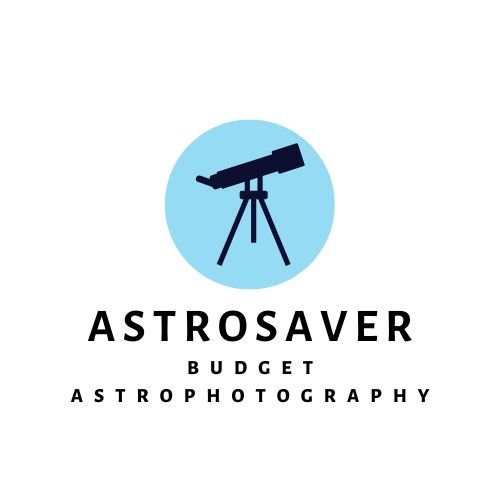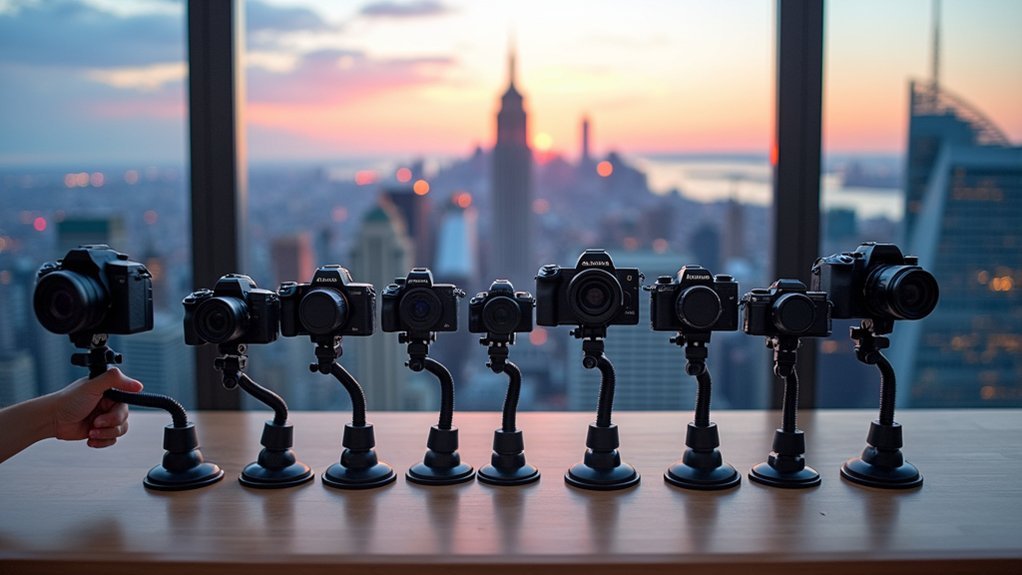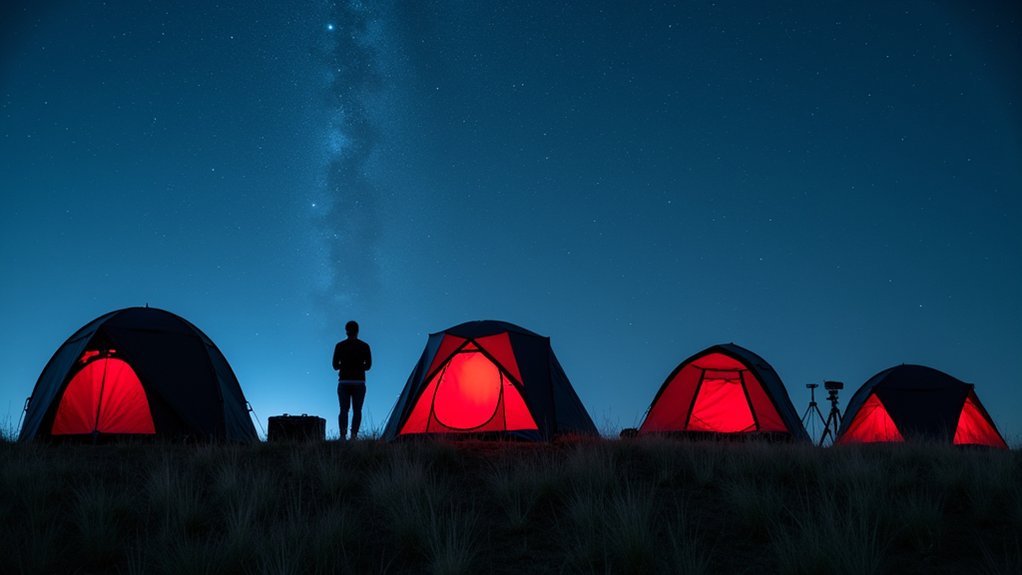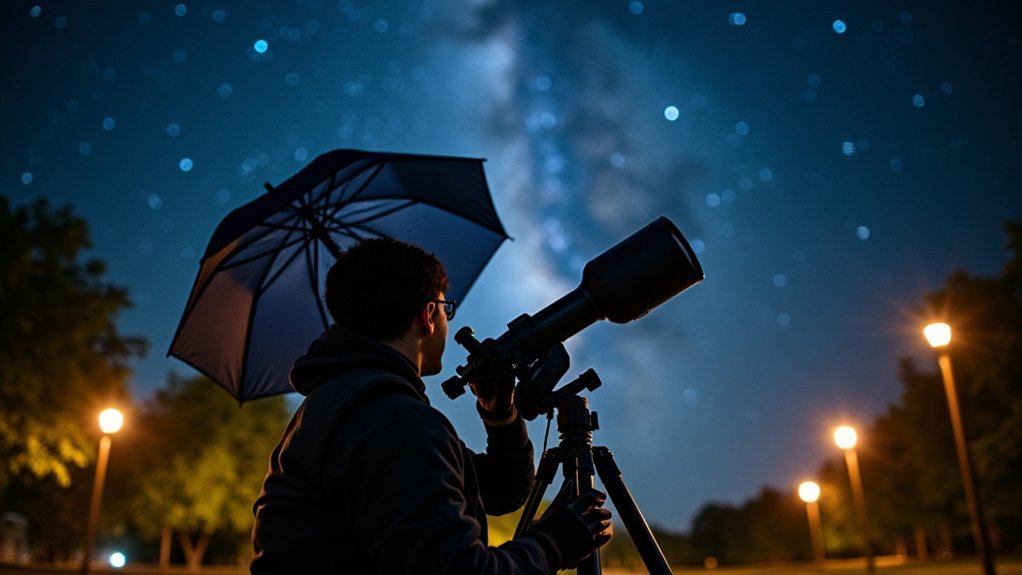Light pollution obscures up to 80% of stars in urban areas and creates an orange skyglow that distorts natural celestial colors. Removing it enhances visibility of stars, nebulae, and galaxies while restoring accurate color balance and contrast. You’ll achieve more striking images with better technical quality by eliminating artificial lighting interference. Proper removal techniques transform flat, hazy photos into vibrant representations of the night sky. The difference between processed and unprocessed astrophotography reveals an entirely new universe of detail.
Why Remove Light Pollution From Astrophotography Images?

When you capture the night sky through your camera lens, light pollution often stands as the invisible barrier between you and the cosmos. This artificial glow obscures faint celestial features, especially in Bortle Class 8 or higher skies, making it difficult to reveal the true beauty of deep-sky objects.
Removing light pollution transforms your images by enhancing the visibility of stars, nebulae, and galaxies that would otherwise remain hidden.
Without this interference, you’ll restore natural contrast and accurate color balance, ensuring celestial objects appear in their true colors rather than washed-out approximations.
The effort you put into eliminating these unwanted gradients pays off not just in technical quality, but in creating more compelling, visually striking representations of the universe that both you and your audience can truly appreciate.
Understanding Light Pollution’s Impact on Astrophotography
When you set up your camera to capture the night sky, orange skyglow from city lights can create a hazy veil across your images that masks the true colors of celestial objects.
Light pollution greatly reduces star visibility, making fainter stars and delicate nebula details impossible to detect without specialized processing techniques.
Your astrophotography’s color balance suffers considerably from artificial lighting, transforming the natural blues and purples of deep space into washed-out, less vibrant versions of their true appearance.
Orange Skyglow Effects
Among the most challenging obstacles faced by astrophotographers, orange skyglow stands out as a particularly frustrating phenomenon.
When you’re capturing the night sky, this pervasive light pollution—primarily from sodium vapor lamps—casts an orange veil across your images, considerably reducing contrast and obscuring the true colors of celestial objects.
You’ll notice this effect makes it nearly impossible to distinguish faint stars and nebulae against the artificially brightened background. The increased signal-to-noise ratio creates substantial challenges during post-processing, as you’ll struggle to extract delicate details from the contaminated data.
The orange hue doesn’t just dim stars—it actively distorts the natural coloration of your astronomical targets.
Fortunately, specialized filters and advanced processing techniques can help you combat these effects, allowing you to reveal the authentic beauty of the cosmos despite urban light pollution.
Star Visibility Reduction
As artificial illumination increasingly floods our night skies, you’ll find that light pollution dramatically diminishes star visibility in your astrophotography.
In urban environments with Bortle ratings of 8-9, up to 80% of stars become invisible to both your camera and eyes.
This isn’t just about fewer stars appearing in your images. Light pollution washes out the delicate details of celestial objects and distorts their natural colors.
Urban light sources emit specific wavelengths that directly interfere with capturing authentic representations of nebulae and distant galaxies.
To combat these effects, consider using light pollution filters that selectively block artificial light wavelengths.
These specialized tools can dramatically improve visibility of fainter stars and restore vibrant colors to your cosmic subjects, allowing you to capture more accurate and impressive astrophotography even from light-polluted locations.
Color Balance Distortion
Light pollution doesn’t just reduce star visibility—it fundamentally alters the color profile of your astrophotography images. The artificial light casts yellow-orange hues that distort the true colors of celestial objects, compromising both scientific accuracy and aesthetic quality.
| Color Impact | Without Light Pollution | With Light Pollution |
|---|---|---|
| Blue Stars | Vivid, true-to-life | Muted, washed out |
| Red Nebulae | Vibrant, detailed | Dull, loss of detail |
| Star Fields | Clear color distinction | Homogenized colors |
| Background | Natural dark gray/black | Artificial orange/yellow |
When light pollution overpowers the faint light from deep sky objects, you’ll find your images lack the color vibrancy they deserve. Post-processing becomes essential, requiring white balance adjustments and specialized filters to restore natural color balance. Effective light pollution removal guarantees your final images faithfully represent the spectacular colors of the night sky.
Essential Tools and Software for Light Pollution Removal
Several powerful software solutions exist for effectively combating light pollution in your astrophotography images.
When processing deep sky objects captured under light-polluted skies, you’ll need specialized tools that can isolate and remove unwanted gradients while preserving celestial details.
- Siril excels at RGB image processing and includes powerful Background Extraction tools specifically designed to eliminate light pollution from Bortle 8/9 skies.
- PixInsight’s WBPP offers local normalization capabilities that effectively address gradients in image stacks.
- ImageMagick/GIMP provide blurring and subtraction methods that can dramatically improve image quality.
- UHC filters work during capture to reduce light pollution while maintaining nebula details.
These tools offer complementary approaches—some work during capture while others during post-processing—giving you multiple strategies to reveal the hidden beauty in your astrophotography.
Baseline Image Preparation for Effective Processing

You’ll want to start with setting your white balance to daylight to establish accurate color representation before tackling light pollution issues.
Working with color balance early guarantees your stars and nebulae retain their natural hues when you begin removing the orange or yellow glow that often dominates urban night sky images.
Mitigate signal interference by enabling lens corrections and adjusting noise reduction while zoomed in, which preserves delicate celestial details that could otherwise be lost during the pollution removal process.
Working With Color Balance
Before diving into advanced light pollution removal techniques, establishing proper color balance creates the foundation for all subsequent editing work. Setting your white balance to daylight during initial preparation guarantees you’re starting with accurate color representation, especially important when you’ll be fighting light pollution’s orange-yellow cast.
- Begin by adjusting temperature and tint sliders to achieve natural-looking star colors.
- Set saturation levels carefully to enhance celestial objects without creating unnatural vibrancy.
- Apply lens corrections to eliminate vignetting for consistent brightness across your frame.
- Fine-tune noise reduction settings when zooming in to preserve delicate details in star fields.
This precise color management approach not only improves your current image but also establishes a consistent workflow for all your astrophotography projects, regardless of your shooting location’s light pollution level.
Mitigating Signal Interference
With properly balanced colors established, signal interference becomes the next hurdle in your light pollution battle. Identifying the darkest pixels in your image reveals where light pollution is most prevalent, providing clear targets for your processing efforts.
To effectively reduce this unwanted noise, employ histogram adjustments and black-point subtractions in your editing software. These techniques preserve celestial details while diminishing the light pollution’s impact.
Consider implementing the Expose To The Right method during capture, slightly overexposing your images to improve signal-to-noise ratio, making light pollution easier to remove later.
For ideal results, use specialized filters like duo band filters during your shooting sessions. These filters block wavelengths commonly associated with light pollution, giving you a cleaner baseline image that requires less aggressive processing to achieve clear, detailed astronomical photographs.
Histogram Adjustment Techniques for Light Pollution Control
Why do histogram adjustments matter so much in astrophotography? They’re vital for controlling light pollution while preserving celestial details in your image.
By properly balancing your histogram, you’ll guarantee the darkest pixels—which often represent unwanted light pollution—are managed effectively without sacrificing the integrity of your astronomical subjects.
- Set contrast to 100% before making adjustments to maximize visibility of celestial objects
- Identify the darkest pixels in your histogram as these typically indicate light pollution
- Adjust the black-point for red, green, and blue channels separately to subtract unwanted light
- Position the histogram’s lower corner to touch the right side during exposure adjustments for ideal pollution removal
These techniques will help you create cleaner, more vibrant astrophotography images where stars and galaxies truly shine against a properly balanced background.
Gradient Removal Methods for Uneven Sky Backgrounds

Tackling uneven sky backgrounds requires mastery of digital gradient removal tools like Siril’s background extraction feature, which can efficiently eliminate light pollution gradients even in heavily affected areas.
You’ll find manual adjustment techniques, such as applying selective Gaussian blur and using soft brushes in Photoshop, particularly effective for addressing specific problematic regions in your astrophotography images.
Proper image calibration methods, including strategic histogram adjustments to set appropriate black points, will preserve celestial details while creating that uniform background essential for showcasing the true beauty of night sky objects.
Digital Gradient Removal Tools
Although astrophotographers can minimize light pollution through careful equipment selection and shooting techniques, digital post-processing remains essential for achieving professional results.
Digital gradient removal tools in software like Siril and PixInsight can transform your light-polluted images by identifying and eliminating uneven sky backgrounds.
- These specialized tools analyze color and brightness distribution, allowing you to selectively adjust affected areas without compromising celestial objects.
- Background extraction techniques and histogram clipping improve color saturation and contrast in images captured under light-polluted skies.
- Manual gradient adjustments give you custom control over the removal process, particularly helpful for complex light pollution patterns.
- Effective use of these digital tools greatly increases visibility of faint celestial features that would otherwise remain hidden behind urban light pollution.
Manual Adjustment Techniques
Even when automated tools fall short, mastering manual gradient removal techniques can salvage your astrophotography images from light pollution’s grasp.
You’ll find the gradient tool in your image editing software particularly useful for selectively reducing exposure in areas most affected by light pollution.
Try creating feathered selections around light-polluted regions, then apply Gaussian blur to smooth shifts across your sky background. Soft brushes are excellent for precise corrections while preserving celestial objects.
Don’t overlook your histogram tools—adjusting the black point helps subtract light pollution while maintaining vibrant star colors and detail.
For uneven light pollution, target specific areas with gradient tools rather than applying global adjustments.
These manual techniques give you complete control over the final image, ensuring your deep sky objects shine against a naturally dark background.
Image Calibration Methods
Four essential calibration methods stand at the forefront of gradient removal for uneven sky backgrounds.
When processing astrophotographs from light-polluted skies, you’ll need effective calibration techniques to normalize pixel intensity across your images.
- Utilize Siril’s Background Extraction tool early in your image processing workflow to address gradients before integrating multiple subs.
- Adjust the black point using histogram tools without clipping the white point to preserve celestial object details.
- Apply Gaussian blur selectively to light-polluted areas for smoother, more uniform sky backgrounds.
- Implement duo band filters when shooting in Bortle 8/9 skies to maintain nebulae details while reducing pollution.
These calibration methods will greatly improve your final images by creating a balanced background that allows your celestial targets to shine through with greater clarity and contrast.
Color Balance Restoration After Pollution Reduction

Once you’ve removed the unnatural glow of light pollution from your astrophotography images, you’ll need to restore proper color balance to achieve natural-looking results. Adjust temperature and tint sliders carefully to prevent artificial hues from dominating your celestial captures.
Fine-tune your image by applying effects sliders that enhance texture while maintaining the vibrancy of celestial objects. Use radial gradients for selective brightness adjustments across different areas of your image.
| Adjustment | Effect | Emotion |
|---|---|---|
| Temperature slider | Corrects color cast | Authenticity |
| Black-point tuning | Eliminates residual pollution | Relief |
| Histogram alignment | Restores accurate star colors | Wonder |
| Radial gradients | Balances regional brightness | Harmony |
Don’t forget to check your RGB channels separately – carefully adjusting the black-point for each can eliminate stubborn color casts that remain after pollution removal.
Preserving Star Detail During Processing
While removing light pollution can dramatically improve your night sky images, preserving the delicate details of stars throughout processing requires careful technique.
When adjusting your black point in the histogram, you’ll need to find the sweet spot that reduces light pollution without clipping the highlights in your stars. This balance is essential for maintaining their natural appearance and subtle color variations.
- Use soft brushes in Photoshop to refine star edges while minimizing pollution’s impact
- Apply gradient tools selectively to reduce exposure in heavily light-polluted areas
- Maintain proper temperature and tint settings to keep star colors vibrant and accurate
- Consider specialized tools like Background Extraction in Siril to remove pollution while protecting star integrity
These techniques will help you create stunning astrophotography with crisp, detailed stars even when shooting in light-polluted environments.
Advanced Masking Techniques for Selective Adjustments

The most powerful weapon in your astrophotography processing arsenal is undoubtedly the ability to make selective adjustments through advanced masking techniques.
Luminosity masks allow you to target specific brightness ranges, enhancing celestial features while minimizing light pollution’s impact.
You’ll find gradient masks particularly effective for reducing light pollution in specific sky regions, giving you finer control over exposure and color balance.
By applying color masks, you can isolate and independently adjust particular hues, enhancing nebulae vibrancy while toning down surrounding light pollution.
Layer masks in software like Photoshop enable non-destructive editing, letting you experiment freely without altering original image data.
Before and After: Visual Assessment of Processing Results
Now that you’ve mastered advanced masking techniques, you’ll want to assess just how effective your processing efforts have been. The contrast between your original and processed images provides compelling evidence of how successfully you’ve managed to remove light pollution.
When examining your results, you’ll notice:
- Stars appear brighter and more vibrant, with true colors finally revealed
- Nebula structures show intricate details previously hidden by light pollution
- Dark sky regions display proper contrast instead of the washed-out glow
- Subtle features and celestial details emerge that weren’t visible before
This visual comparison isn’t just satisfying—it confirms your technical success. The transformation from a light-polluted, flat image to one showcasing the cosmos in its natural splendor demonstrates why these processing techniques are essential for serious astrophotographers.
Frequently Asked Questions
What Is the Purpose to Reduce Light Pollution?
You’ll reduce light pollution to enhance celestial objects’ visibility, achieve better color accuracy, improve signal-to-noise ratio, and create clearer images of stars and deep-sky objects for both aesthetic and scientific purposes.
Can You Still See Stars With Light Pollution?
Yes, you can still see stars with light pollution, but you’ll notice fewer stars—typically only the brightest ones. Light pollution washes out fainter celestial objects, considerably reducing the richness of your night sky experience.
Can You Photograph the Milky Way With Light Pollution?
Yes, you can photograph the Milky Way with light pollution. You’ll need specialized filters, longer exposures, and image stacking techniques. Post-processing is essential to enhance contrast and remove gradients from urban lighting.
Are Light Pollution Filters Worth It?
Light pollution filters are worth it if you’re shooting in urban areas. They’ll improve contrast and reveal more details in deep-sky objects, though you’ll need to adjust for color shifts during post-processing.
In Summary
Removing light pollution from your astrophotography isn’t just about aesthetics—it’s essential for revealing the true beauty of celestial objects. With the right tools and techniques, you’ll uncover details hidden by artificial glow. As you master histogram adjustments, color balance restoration, and selective masking, you’ll transform washed-out images into spectacular cosmic portraits. Your effort to eliminate this unwanted interference will dramatically enhance your astronomical imagery.





Leave a Reply